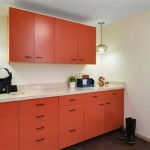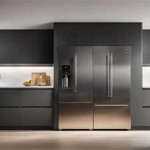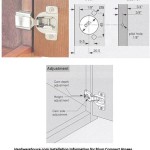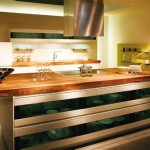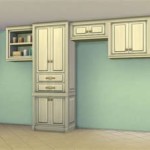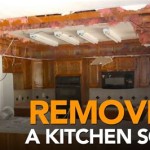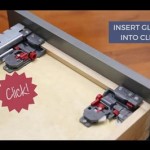Kitchen Cabinets That Won't Close: Troubleshooting and Solutions
Kitchen cabinets are integral components of kitchen functionality and aesthetics. Their proper operation, particularly the ability to close securely, is essential for maintaining order, preventing damage to stored items, and contributing to the overall appearance of the space. Cabinets that fail to close present a multitude of inconveniences, ranging from visual clutter to potential hazards. Determining the underlying cause and implementing the appropriate solution are crucial for restoring the cabinets to their intended functionality.
The reasons behind cabinets refusing to close can be diverse, stemming from issues with the hinges, the alignment of the cabinet door, obstructions within the cabinet, or even structural changes caused by environmental factors. A systematic approach to diagnosing the problem is necessary to identify the specific cause and implement the correct remedial measures. This article will explore common reasons why kitchen cabinets fail to close properly, offering practical solutions for each scenario.
Hinge Problems: Adjustment, Repair, and Replacement
Hinges are the mechanical backbone of cabinet doors, facilitating their movement and ensuring proper alignment within the cabinet frame. Malfunctioning hinges are a frequent culprit when cabinets fail to close. Several issues can arise concerning hinges, including loose screws, misalignment, damage, or wear and tear. Examining the hinges closely is the first step in addressing this potential cause.
Loose screws are perhaps the most common hinge-related problem. Over time, the screws securing the hinge to the cabinet door and frame can loosen due to repeated opening and closing, causing the door to sag or shift. The initial solution is to tighten the loose screws using a screwdriver. If the screw holes are stripped, meaning the screws no longer grip the wood effectively, there are several remedies. One option is to use wood glue and toothpicks or small wooden dowels to fill the stripped holes. After the glue dries, the screws can be re-inserted into the newly reinforced holes. Another option is to use longer screws that can reach deeper into the wood and establish a more secure hold.
Misalignment of the hinges can also prevent the cabinet door from closing properly. This can occur due to shifting of the cabinet frame, warping of the door, or even accidental adjustments made during previous repairs. To correct misalignment, it is necessary to loosen the hinge screws slightly and carefully adjust the position of the hinge on either the door or the frame. The goal is to realign the door so that it sits flush against the cabinet frame when closed. A level can be used to ensure the door is aligned vertically and horizontally. After making the necessary adjustments, the screws should be tightened securely.
In cases of physical damage to the hinges, such as bending, corrosion, or breakage, replacement is often the only viable solution. Replacement hinges can be purchased at most hardware stores and home improvement centers. It is important to choose hinges that are the same size and type as the original hinges to ensure a proper fit. Removal of the old hinges and installation of the new hinges typically involves unscrewing the old hardware and screwing in the new hardware in the same locations. If the screw holes are stripped, the aforementioned methods for repairing stripped screw holes should be employed.
Beyond standard hinges, many modern cabinets utilize European-style hinges, also known as concealed hinges. These hinges offer a clean, streamlined look and often incorporate adjustment mechanisms that allow for fine-tuning of the door's position. If a cabinet with European-style hinges is not closing properly, the adjustment screws on the hinges should be examined. These screws typically allow for adjustments in three directions: vertical, horizontal, and depth. By carefully adjusting these screws, the door can be aligned and repositioned to ensure a proper closure. Instructions for adjusting European-style hinges are often available from the manufacturer or online.
Cabinet Door Alignment Issues: Addressing Warping and Obstructions
Even with perfectly functioning hinges, a warped cabinet door or obstructions within the cabinet frame can prevent proper closure. Warping refers to the bending or twisting of the door, typically caused by changes in humidity or temperature. Obstructions can include items stored too close to the door, debris lodged in the cabinet frame, or even swelling of the wood itself.
Warping is a common problem, particularly in areas with high humidity. Exposure to moisture causes the wood to expand, which can lead to warping. While it is difficult to completely reverse warping, some techniques can help to mitigate the problem. One approach is to use a dehumidifier to reduce the humidity in the kitchen, which may allow the wood to dry out and return to its original shape. In some cases, clamping the warped door to a flat surface for an extended period can also help to straighten it. However, this method is not always effective and may require professional assistance.
Significant warping might necessitate professional repair or even replacement of the cabinet door. A professional woodworker can assess the extent of the warping and determine whether it can be corrected. In severe cases, the door may need to be replaced with a new one that is properly constructed and sealed to prevent future warping. When replacing a cabinet door, it is crucial to match the existing style and finish to maintain the overall aesthetic of the kitchen.
Obstructions within the cabinet frame are another common cause of closure problems. Items stored too close to the door can prevent it from closing fully. Regularly inspecting the contents of the cabinet and rearranging items to ensure sufficient clearance is essential. Check for items that may have shifted or fallen forward, blocking the door's path. Additionally, debris such as crumbs or dust can accumulate in the cabinet frame and hinder the door's movement. Regularly cleaning the inside of the cabinet and the frame can help to prevent this problem.
In some cases, swelling of the wood itself can obstruct the door's closure. This is particularly common in older cabinets or cabinets that have been exposed to moisture. The wood can expand, causing the door to press against the frame and preventing it from closing properly. Reducing humidity and ensuring proper ventilation in the kitchen can help to mitigate this problem. In extreme cases, it may be necessary to sand down the edges of the door to create more clearance. This should be done carefully and precisely to avoid damaging the door's finish.
Cabinet Frame Issues: Structural Instability and Leveling
The cabinet frame itself can also contribute to closure problems. If the frame is not level or if it has become structurally unstable, the doors may not align properly and close securely. Issues with the cabinet frame can arise from uneven flooring, settling of the house, or damage to the cabinet structure.
Uneven flooring is a frequent cause of cabinet frame misalignment. If the floor is not perfectly level, the cabinet frame may sit at an angle, causing the doors to bind or not close properly. Using shims to level the cabinet frame is a common solution. Shims are thin, tapered pieces of wood that can be inserted under the cabinet to raise it to the correct height. A level should be used to ensure the cabinet is properly leveled before securing the shims in place.
Settling of the house can also cause cabinet frame misalignment. Over time, the foundation of a house can shift, which can affect the alignment of the cabinets. This is particularly common in older homes. If settling is the cause of the problem, it may be necessary to consult with a professional contractor to address the underlying structural issues. In some cases, simply adjusting the cabinet hinges and using shims may be sufficient to correct the problem.
Damage to the cabinet structure can also cause closure problems. This can include cracks in the frame, loose joints, or warping of the cabinet walls. Repairing the damaged structure is essential for restoring the cabinet's functionality. This may involve reinforcing the joints with screws or glue, patching cracks, or even replacing damaged sections of the cabinet frame. In severe cases, it may be necessary to replace the entire cabinet.
Inspecting the cabinet frame for squareness is also important. Over time, the frame can lose its square shape, causing the doors to misalign. A carpenter's square can be used to check the corners of the cabinet frame. If the frame is not square, it may be necessary to reinforce the corners with corner braces or to rebuild the frame entirely.
Finally, ensuring that the cabinet is securely attached to the wall is crucial for maintaining its stability and proper alignment. Loose or missing screws can cause the cabinet to shift, leading to closure problems. Inspecting the screws that secure the cabinet to the wall and tightening or replacing them as needed is essential. In some cases, it may be necessary to add additional screws or to use toggle bolts to provide a more secure attachment.

How To Adjust Kitchen Cabinet Doors That Won T Close
Easy Fixes How To Fix A Cabinet Door That Won T Close Maxave
Easy Fixes How To Fix A Cabinet Door That Won T Close Maxave

How Does One Adjust Soft Closing Cabinet Drawers Bathroom Kitchen Remodelers Custom And Semi Cabinets

Why Won T My Cabinet Doors Close All The Way How To Fix

Comprehensive Look At Soft Close Hinges For Cabinets Dkb

Extending Kitchen Cabinets Up To The Ceiling Thrifty Decor Diy And Organizing
Easy Fixes How To Fix A Cabinet Door That Won T Close Maxave

How To Adjust Cabinet Doors That Won T Close Cabinetdoors Com

10 Simple Ideas To Update Your Kitchen Cabinets Jenna Sue Design
Related Posts


